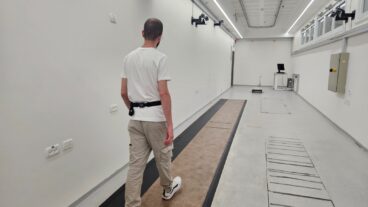An Israeli life science firm proves that DNA does not indisputably tie suspects to a crime scene after all, and develops a test to authenticate it.
Until just a few weeks ago, DNA evidence was considered by legal and judicial authorities worldwide to be the gold standard for proof of guilt, better than eyewitness accounts and even suspect admissions, in some cases. Following the findings of an Israeli life science company, this may not be the case anymore.
In mid-July, Nucliex of Tel Aviv published a study called Authentication of Forensic DNA Samples, demonstrating that DNA evidence, as it is currently processed by forensic labs, may not indisputably tie individuals to crime scenes, as originally thought.
Why not? Not only can anyone’s DNA be easily and inexpensively fabricated in a lab with fairly uncomplicated techniques, but this fabrication does not even require an actual tissue sample, or “source DNA” from the person whose genetic fingerprint the DNA evidence is meant to irrefutably represent. All that is required is knowledge of some of their DNA’s numerical sequence.
The accessibility of today’s DNA-manufacturing laboratories (many even offer their services online), puts virtually everyone in danger of having a sample of something that looks to forensic labs like their genetic material, turn up at a crime scene.
Of course, the primary end of such DNA manufacturing labs is not to produce DNA to sabotage crime scenes with fake evidence. Nor is it used primarily for other malevolent ends such as biological identity theft, gene spying and other invasions of genetic privacy.
DNA is copied and reproduced (“amplified”) by outsourced labs for use in thousands of experiments at medical research institutes, universities and hospitals.
How to distinguish between genuine and fake DNA
“The problem is that forensic laboratories today cannot distinguish between natural DNA, of human origin, and the artificial sort that is manufactured in a lab,” Dr. Elon Ganor, co-founder and CEO of Nucliex, tells ISRAEL21c.
Nucliex, however, has an answer. The company has developed a test, or “assay” that can conclusively determine whether DNA evidence comes from a human being or a laboratory.
The potential legal ramifications of both the easy accessibility to molecular engineering lab services and the current insufficiency of forensic testing standards, are huge.
There is no telling how many samples were genuine in the thousands of cases that have relied on DNA evidence to achieve a conviction, and how many were manufactured in a lab and sprayed onto a crime scene by an interested party.
Ganor raises another even more frightening possibility: “Evidence can potentially be tampered with not only by criminals, but also by vigilante district attorneys or other government or law enforcement agencies, which have particularly easy access both to lab resources and convicted criminals’ DNA sequences.”
The DNA sequences of more than seven million convicted criminals are stored by law enforcement agencies in the US; six million such records exist in Europe.
Nucleix adds “authentication” to the forensic process
Nucleix was co-founded in 2008 by Ganor along with two geneticists from the Weizmann Institute of Science in Rehovot, Dr. Dan Frumkin, and Dr. Adam Wasserstrom.
Ganor, an experienced high-tech angel investor himself, provided some of the start-up funding. The rest came from other angel investor friends of his.
The company is now in the midst of producing its second-generation assay, with an eye to integrating its “authentication” test into the current standard forensic process.
Currently consisting of “extraction,” “quantification” and “profiling,” the forensic process begins with the collection of DNA from a spot of blood, saliva, semen or any other tissue sample. Current forensic tests cross-reference 26 ‘genotype positions,’ or nucleotide sequences (20 in Europe) to make a positive ID.
“If you consider that there are 10 to 20 variants at each position, this is a very accurate test and should suffice as positive proof of identity,” says Frumkin, Nucleix’s VP of biochemistry, “and it does, provided that the DNA is real.”
Nucleix’s aim is to add one more step to the process – “authentication” – to ensure that the sample is real human DNA, and thus credible for use as evidence.
Beyond a reasonable doubt
“If we can add this check into the DNA evidence testing process, we can be sure that the evidence came from an actual person instead of being planted at a crime scene by someone who got the material engineered in a lab,” says Frumkin.
“Right now, our assay can distinguish between natural and fake DNA but it still needs to be integrated into the existing process,” he adds.
The company is designing the authentication step so that it will be easy to execute, won’t require any special training for forensic lab technologists, or new equipment, and won’t add too much additional cost or time to the usual one-day turnaround of forensic tests.
Nucleix plans to release the second-generation assay in a couple of months. The hope is that it will either be adopted by the commercial companies that produce DNA fingerprinting kits, in their search for a competitive edge, or be mandated by court order included in forensic testing standards.
The ball should be rolling in mid-October, when Frumkin will present his team’s findings and the second-generation authentication assay at the 20th International Symposium on Human Identification in Las Vegas, Nevada.
“In order to convict a person of a serious crime you need to do it beyond a reasonable doubt,” says Frumkin. “In my humble opinion, it is just a matter of time before the courts will realize that this is a serious problem and that unless DNA has been authenticated and found to be of natural origin, it is not reliable evidence.”












